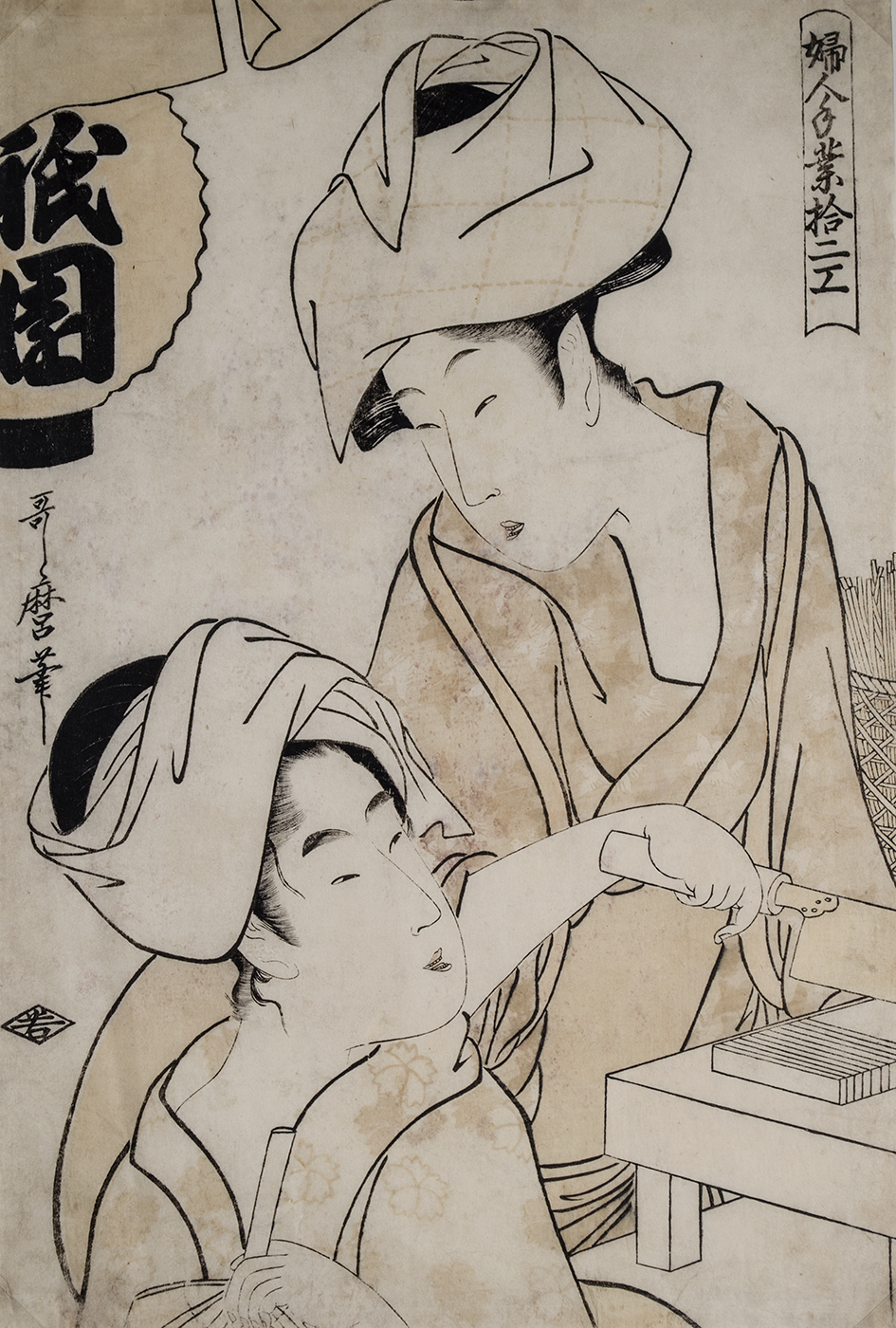
From the series "Twelve Types of Women's Handicraft"
Utamaro is considered the dominant ukiyo-e artist of the 18th century. His color woodblock prints were devoted to the depiction of idealized pictures of beautiful women of the ukiyo—the ‘floating world’ of pleasure houses—in portraits and domestic settings.
The print is part of a series entitled “Twelve Types of Women’s Handicraft.” It was produced after the shogunate acted to curb the increasing corruption and extravagance of Edo (now Tokyo) society. Employing simpler compositions and less extravagant color schemes, the series shows the lives of women engaged in their daily activities, rather than the glamorous lives of the geisha beauties which Utamaro had previously depicted.
The intimate scene shows two women engaged in preparing a popular dish of roasted tofu. While one woman cuts the tofu into thin strips, she chats pleasantly with her friend. They are both dressed in casual kimonos; each has her hair wrapped in a beautifully arranged protective cloth. Their lovely stylized faces are nevertheless emotionally expressive: we see the enjoyment in their petal-shaped lips; warm, smiling eyes; and the tilt of their heads in conversation.
In addition to the admiration of the abstracted beauty of line and decorative motifs of Japanese pictorial images, we are invited to appreciate the emotional associations of the small details and daily routines of life. The simple act of preparing tofu enhances the inherent beauty of these women, and provides the viewer with a harmonious experience of their quiet world.

